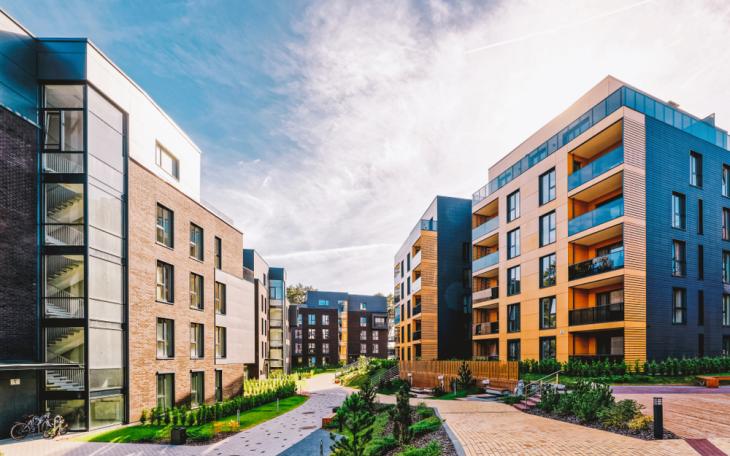Build to Rent: Putting ESG into action in property

The UK housing market is broken – we’re facing raging inflation, increased interest rates, a chronic shortage of homes, and a looming cost of living crisis thanks to a spike in energy pricing, amongst other things. The rental market leaves a lot to be desired too – a large proportion of the Private Rented Sector (PRS) stock doesn’t meet the Decent Homes Standard, leaving home seekers hungry for a viable alternative.
Build to Rent (BTR) – the focus of SEC Newgate’s inaugural breakfast event – can do much more for the property sector than just provide visually attractive homes. It has the potential to transform the way residential property is designed, built, used and managed, placing ESG considerations at the forefront (according to the panel of experts who gathered in our new Greville Street offices this Tuesday to share their knowledge and market insights).
Designing with sustainability in mind
The very design of BTR buildings ensures a higher level of sustainability than the majority of PRS homes from the get-go. With utilities centred at the core of the building, and a variety of sensors in place to regulate its electrical and mechanical equipment (lighting, heating, air-conditioning, and other systems), these buildings are not only energy efficient, but also highly cost-effective from an operational perspective, resulting in reduced utility bills for the end user.
With institutional investors being particularly active in the BTR space, securing funding is often subject to an array of ESG-focused requirements which developers need to satisfy. This creates an important incentive for developers to embed sustainable features and practices into the scheme from the outset, resulting in positive environmental outcomes.
Allowing communities to evolve organically
One of the key differences between BTR and PRS homes is that the former are designed with the community in mind. What this means in practice is that residents get access to a variety of communal areas – from landscaped roof terraces to coworking spaces - which those within the industry refer to as ‘incremental touch points’, designed to encourage chance encounters and foster a sense of community. In addition, tenants often have access to residents’ apps, which make it easier for them to connect with other people within their building and receive information about upcoming events, charity initiatives, restaurant openings and more, promoting inclusion and a sense of belonging.
Long-term approach and accountability
One of the key differences between BTR and traditional for-sale homes is the on-going focus on the end user. BTR operators have long-term vision – they’re involved in the day-to-day running of the building, constantly monitor residents’ feedback, make adjustments to their projects as they go and hire those who are genuinely interested in people. Space as a service requires constant presence and focus, and failure to act on feedback can easily result in increased void periods. This long-term focus promotes accountability and encourages operators to work to higher standards.
It is worth noting that the UK BTR industry is still in its infancy, which encourages property professionals with relevant expertise to come together to discuss challenges and share best practice (the UKAA is an excellent example of such a forum), creating a transparent, collegiate environment where people work together to achieve better outcomes for the community. This transparency encourages industry players to adhere to higher standards in order not to fall behind their peers, and to implement ideas that proved successful elsewhere.
Improving industry standards beyond BTR
For now, BTR represents a very small proportion of the UK rental market, but it is set to increase substantially over the next few years, with 4,390 BTR units currently under construction in Birmingham alone[1]. As more and more consumers learn about the benefits of this asset class, the PRS sector may face challenging times ahead and be forced to upgrade and innovate to remain relevant, which will hopefully mean that UK housing standards will improve across the board.
We would like to thank Lesley Roberts (Allsop), Alastair
Mullens (Vertus, Canary Wharf Group), Alex Notay (PfP Capital) and Tony Garner
(Watkin Jones Group) for joining us on Tuesday to share their industry-leading
expertise.
[1] According to a recent research report by Gerald Eve https://indd.adobe.com/view/8f764955-605e-4094-802e-0754c25c422a









